UNIVERSITY CITY II
With little damage to campus property during the Unrest, Wayne State University strove to widen its borders and develop its facilities after the summer of 1967. A project titled ‘University City, No. 2, Urban Renewal Project’ purchased vacant buildings or those damaged during the Unrest for redevelopment. The initial University City was planned before 1967 and produced Adams Field and the Matthaei athletic complex. Opposition from local community groups changed the project’s scope, and University City, No. 2 fell short of its transformative goals.
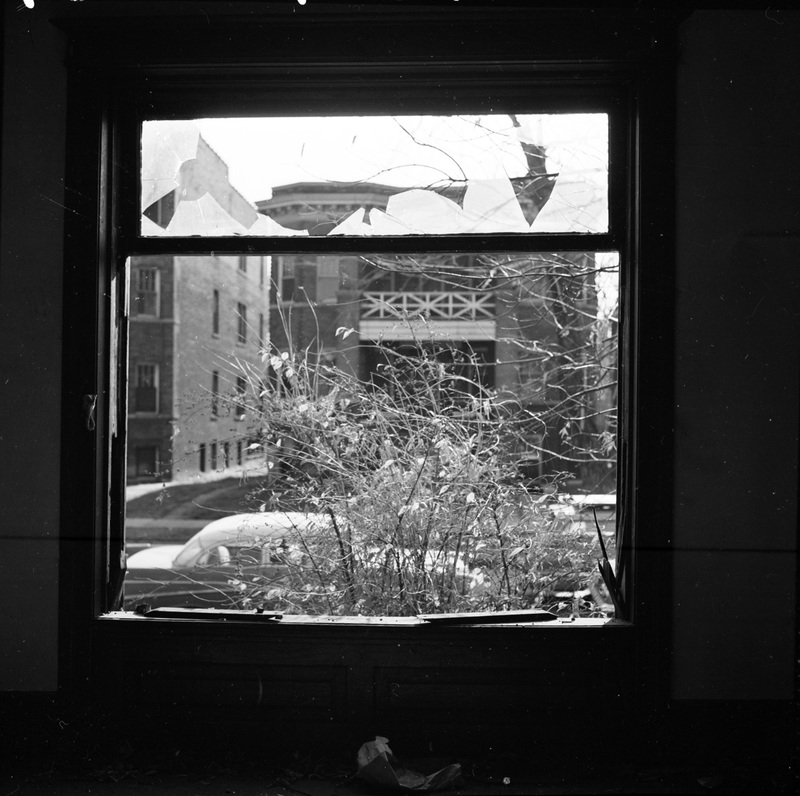
View from a house in Detroit’s Midtown district, designated as “blight” and suitable for redevelopment as part of the original University City project. 1964. Courtesy of the Detroit News Collection.

Description of the University City, No. 2 project, colloquially named “University City II,” 1970. University City II eventually fizzled out after the 1971 agreement between the City of Detroit and the Model Cities Governing Board. The agreement legitimized the Model Neighborhood group’s authority to demand a say in their area’s redevelopment, saving their residences while halting Wayne State’s plans. Source: Ruth M. Tenney Papers, Box 13, folder 20.
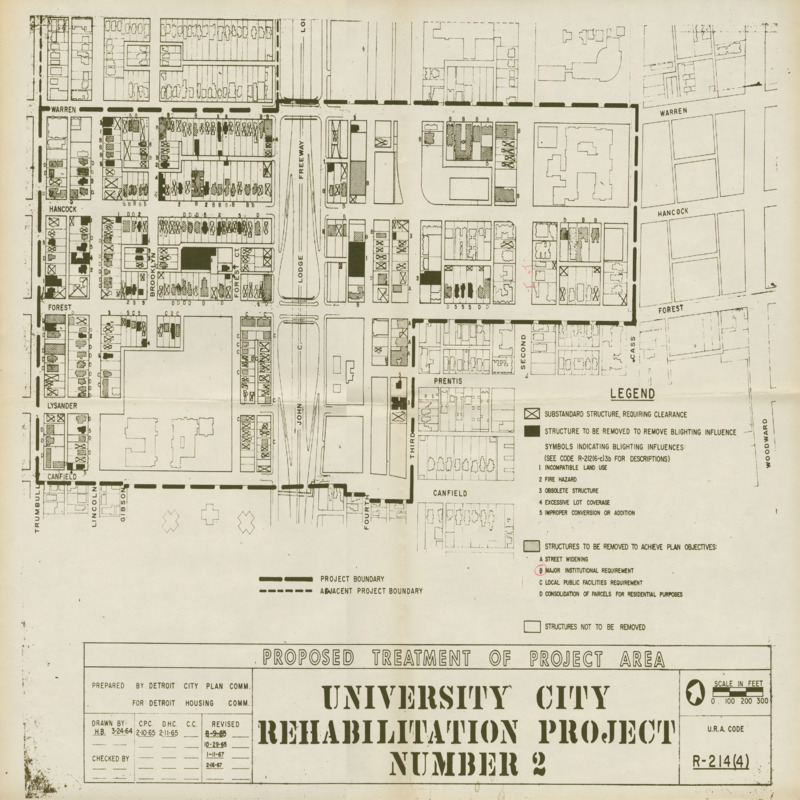
University City Rehabilitation Project Number 2 proposed treatment of project area map, c. 1969. Source: Ruth Tenney Papers, Box 13, folder 34.
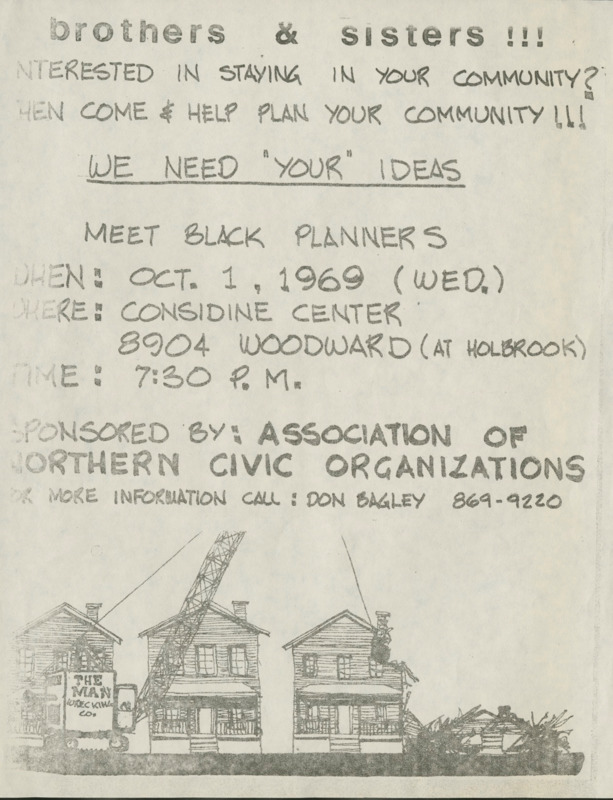
Community meeting announcement flyer to oppose the development of University City II. 1969. Source: Ruth M. Tenney Papers, Box 13, folder 18.
A large divide appeared between Wayne State University’s description of the University City II project and that of local Citizens District Council. Do you think the University was overstepping its bounds or would the University City project have made the Midtown area a more livable community? What evidence might impact your viewpoint?
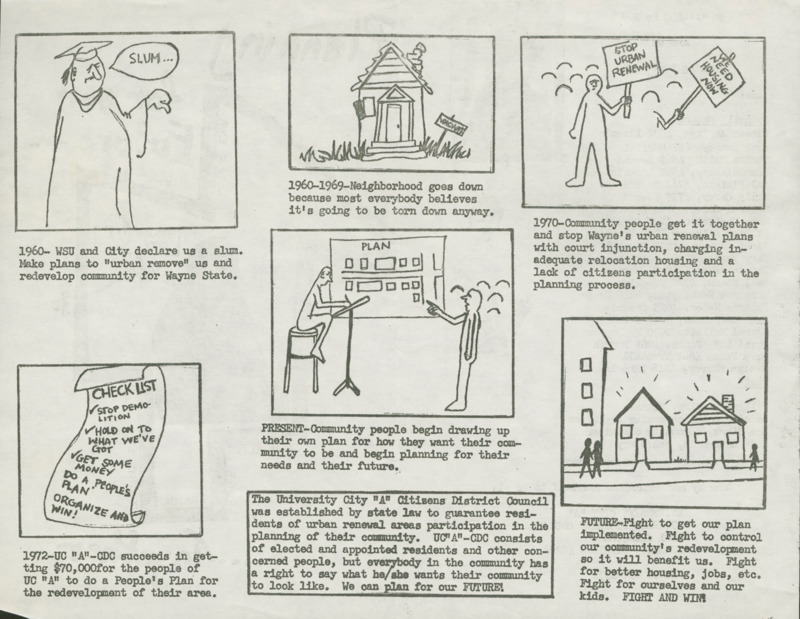
Anti-University City II cartoon. The University City A Citizens District Council was an alternate form of government established by the Model Neighborhoods program (discussed earlier in the Fair Housing Ordinance panel) to represent residents living near the University’s campus. The council became the primary opponent to the renewal plan. Source: Ruth Tenney Papers, Box 13.

Residents within the University City zone received letters from attorneys like this one, urging them to sell their houses to the city or immediately go into foreclosure. January 1972. Source: Ruth M. Tenney Papers, Box 13, folder 17.
How do you feel about the attorney’s approach in this letter? What laws would have governed this matter in 1972? What information would you need to be sure?
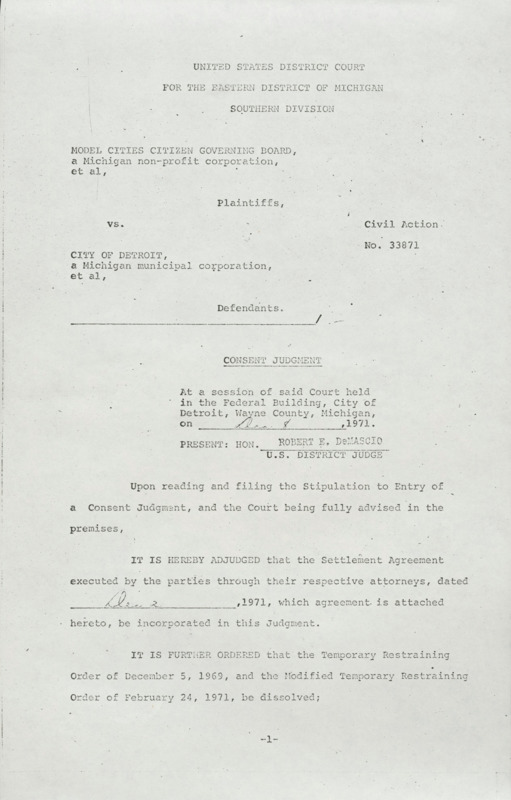
In 1971, the local Model Cities Citizen Governing Board and the City reached a settlement over the future of the University City II project. The settlement recognized the legal authority of the board, ensured their participation in Wayne State’s project, and offered significant protections to the residents whose homes redevelopment threatened. A major victory for people living in neighborhoods around the school, the settlement severely set back University City II and the remaining three phases of the project never came to pass.